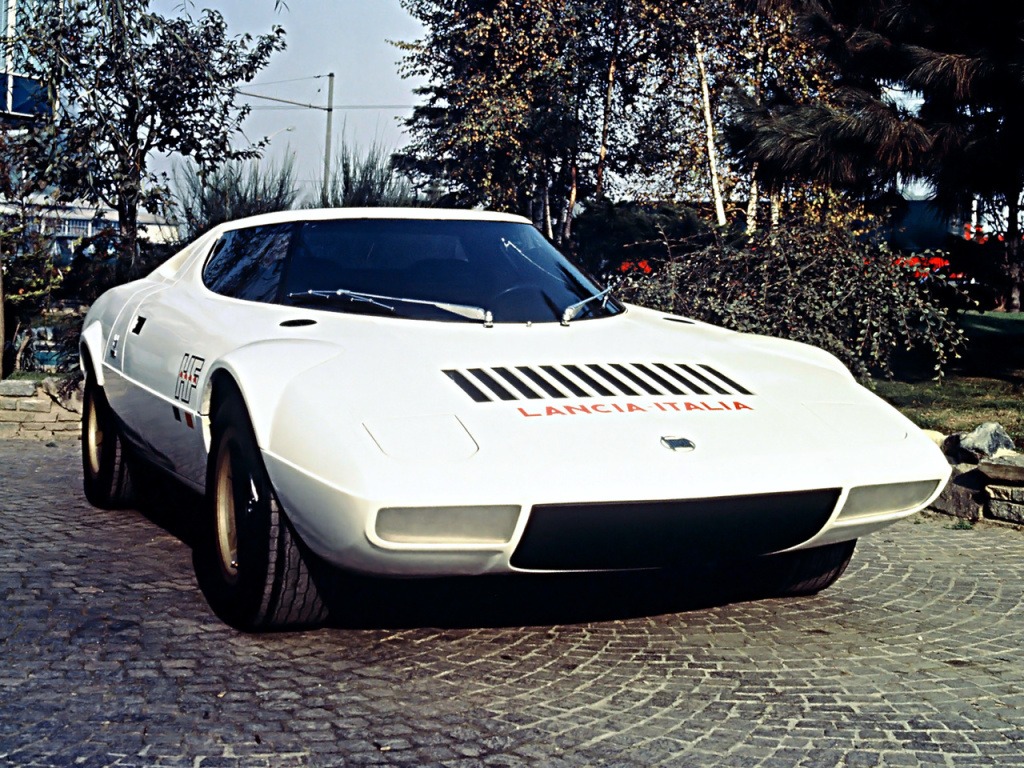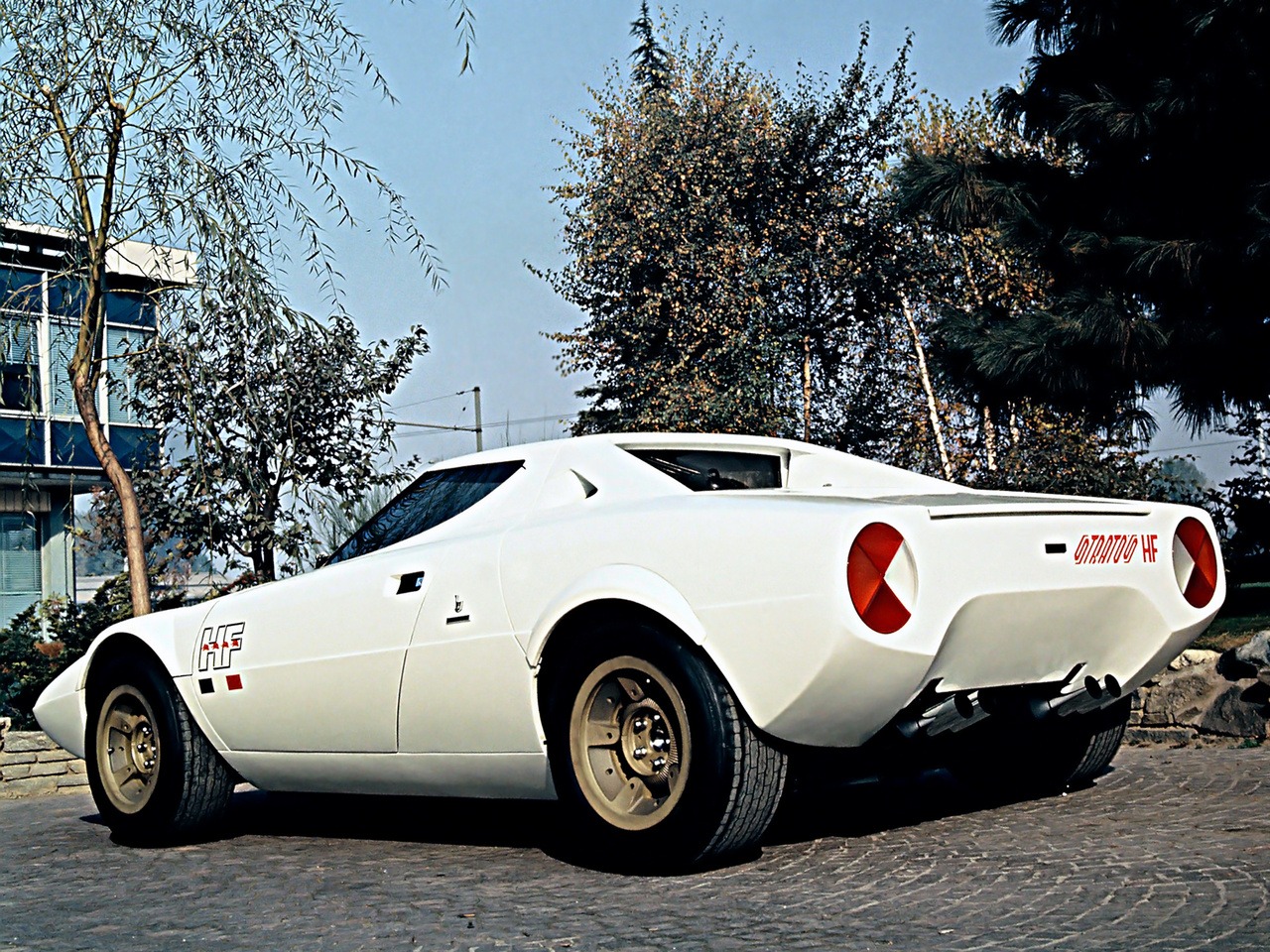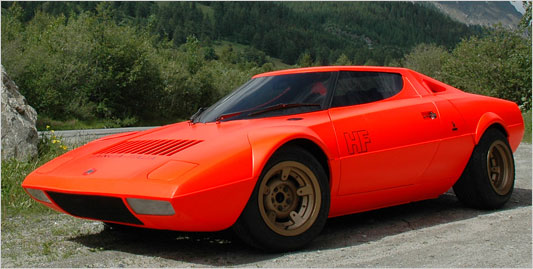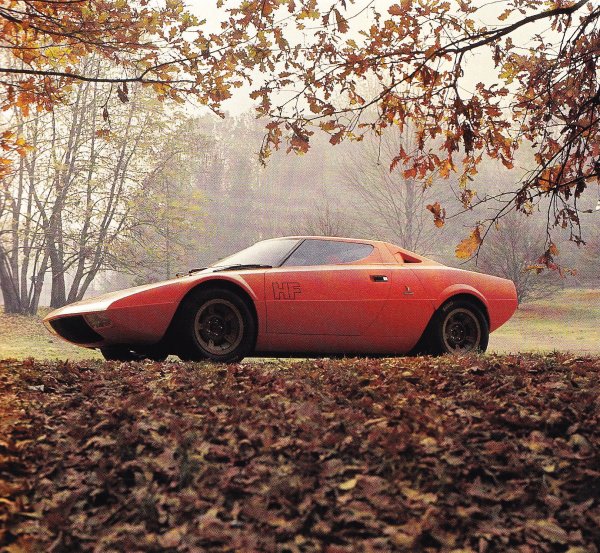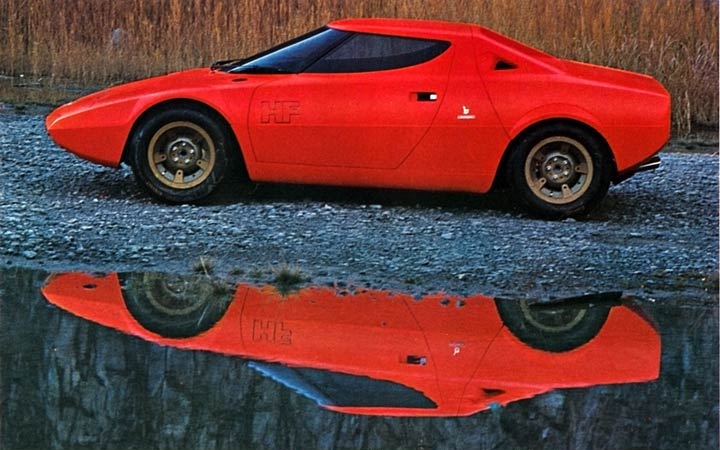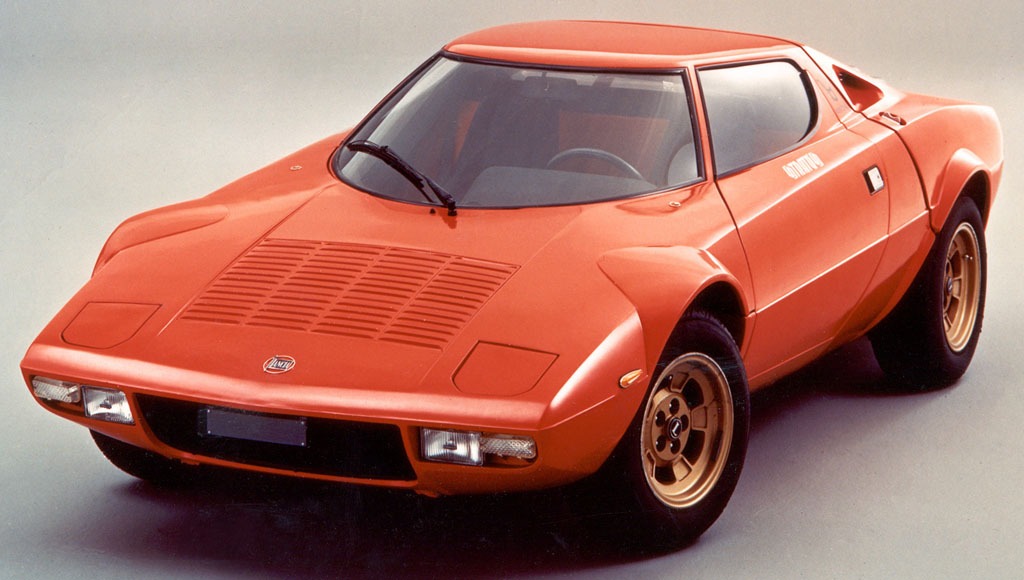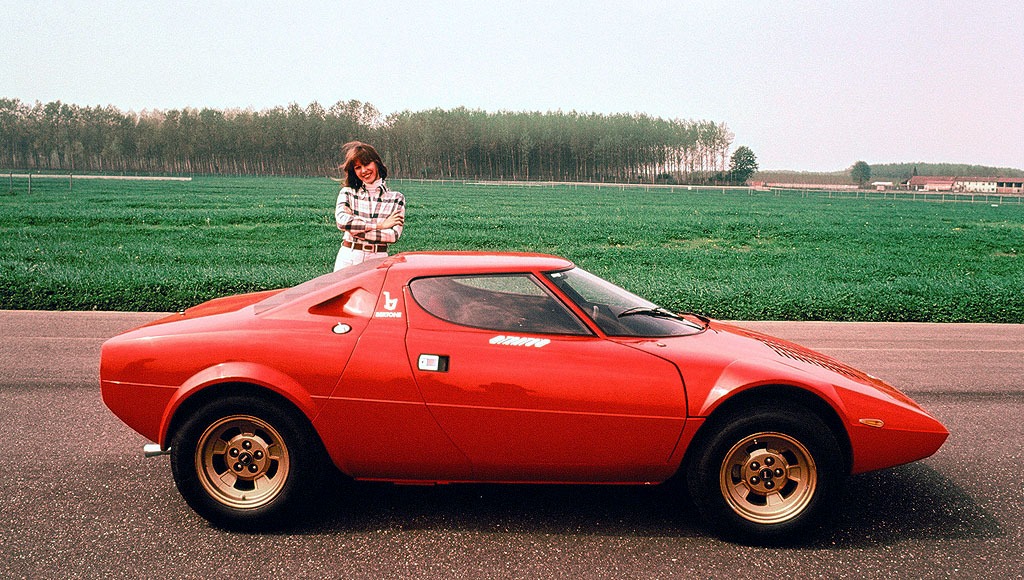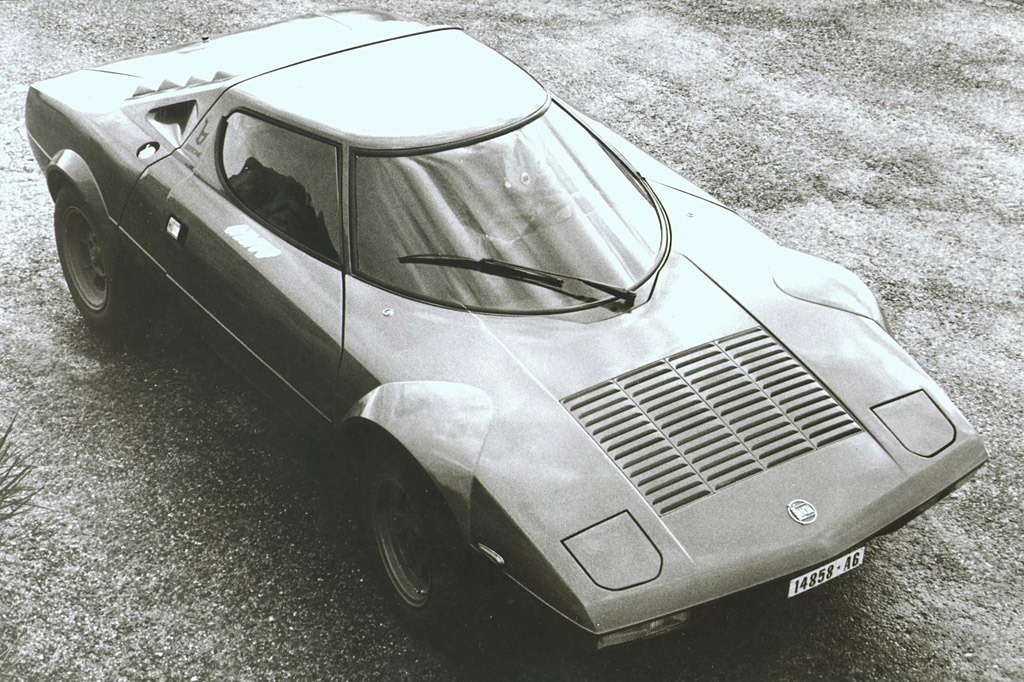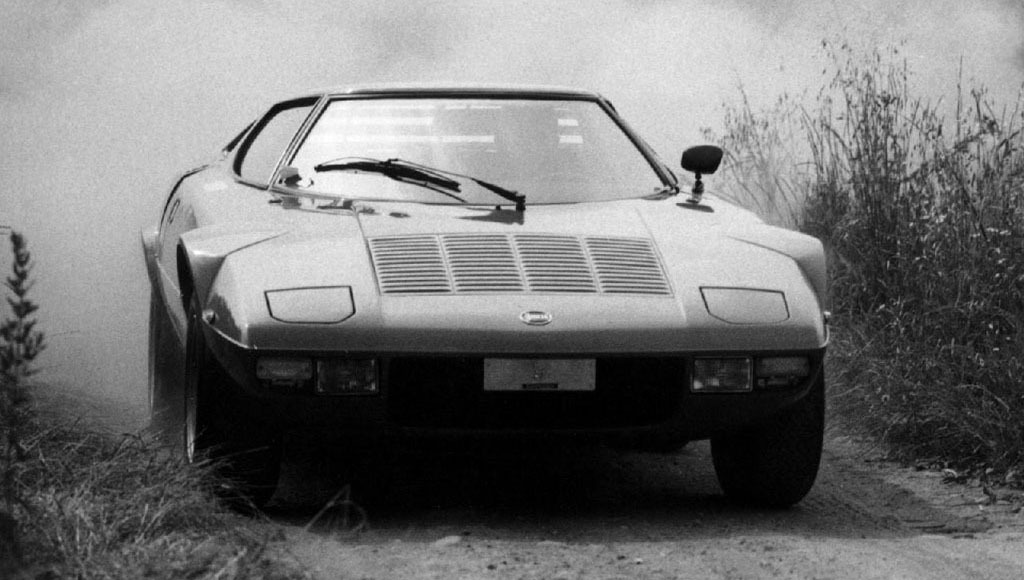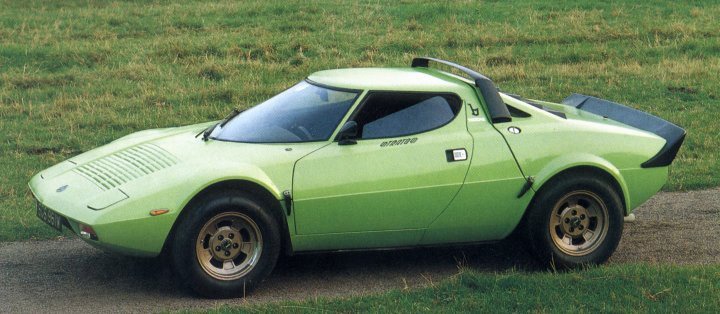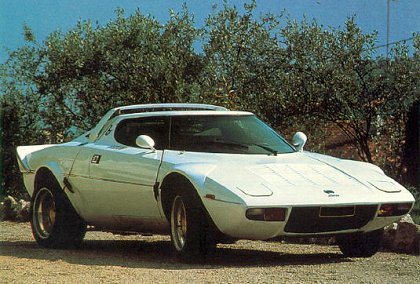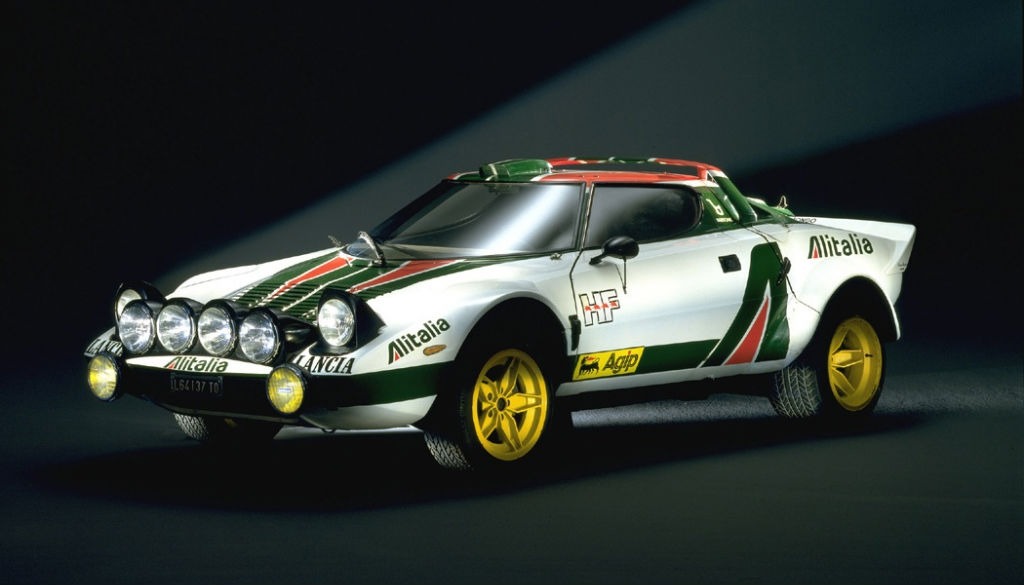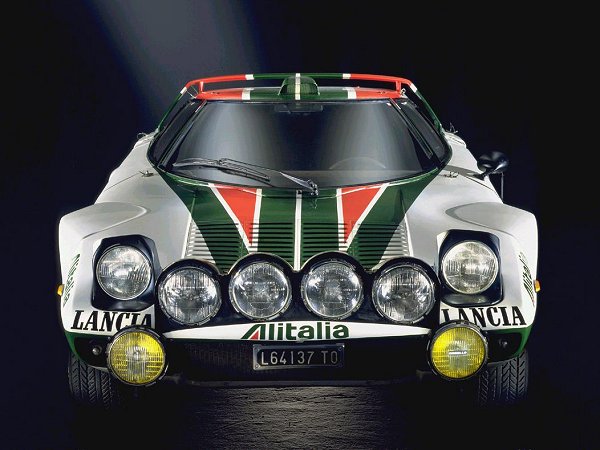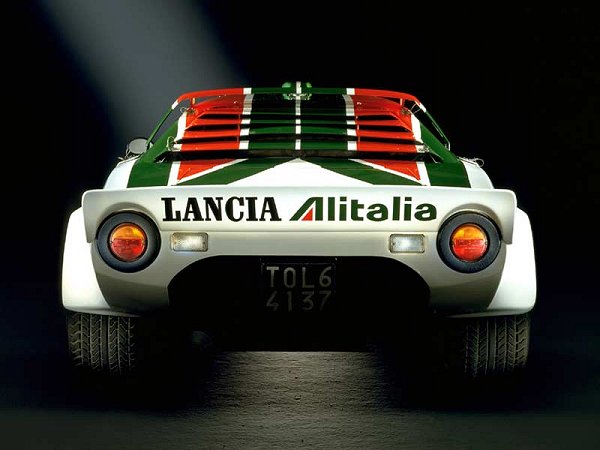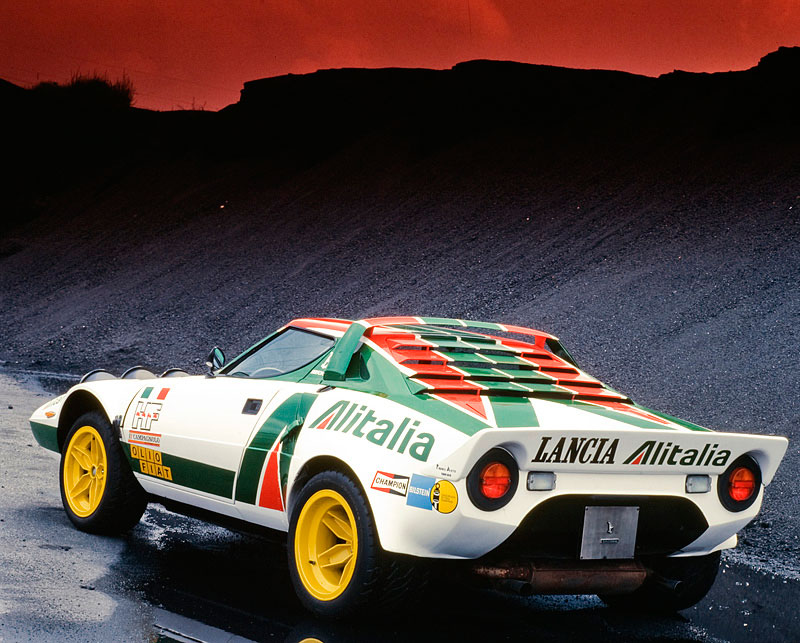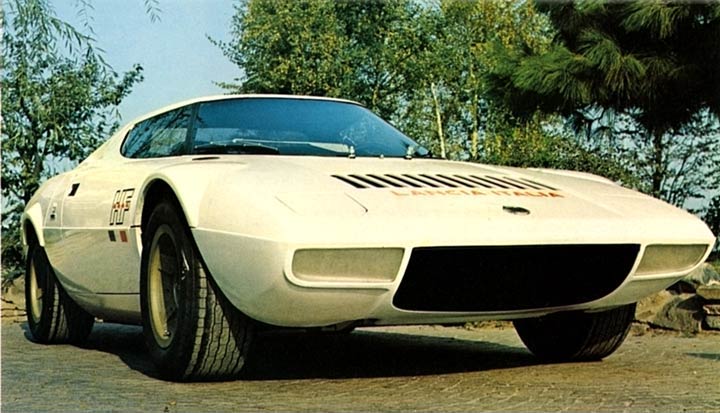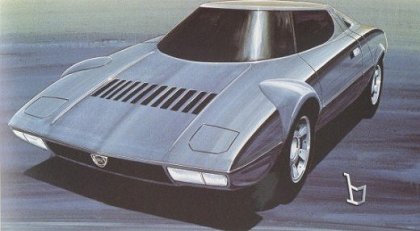stunned the world at the 1970 Turin Motorshow with their design. Nuccio Bertone initially wanted to call the ultra-compact wedge-shape design Stratoline because of its space-ship-like appearance. Not much on the Stratos concept was conventional, except for the fact that the wheels were round. Fitted low and midships in the chassis was a 1.6 Lancia Fulvia powerplant. The running prototype featured an all new monocoque style chassis, custom built for the Stratos.
In the next few months the concept appeared in magazines all over the world and Lancia talked with Bertone to construct a purpose built rally based on the Stratos design. This car debuted at the 1971 Turin Motorshow and resembled the previous Stratos in name only. Even though Lancia was working on a new competition engine Bertone fitted the Stratos with a Dino engine which he had lying about. The extremely compact design looked like the winning recipe for the twisty roads used in rallies.
Nothing much happened in 1972 as Lancia was still waiting for their new competition engine. Late that year Bertone suggested that Lancia should stick with the Ferrari engine and start production of the Stratos. His suggestion received mixed reactions but works racing manager Cesare Fiorio was on his side. Finally production of the 400 cars needed for homologation started. By October 1974 the Stratos was homologated for Group 4 rallying.
Over the next couple of years the Stratos’ dominance was total. It scored 17 world championship victories and over 50 european championship victories. Victory in the legendary rally Monte Carlo rally was taken four out five times between 1975 and 1979. Two were converted to Group 5 road racing specifications with a Turbocharged engine. These silhouette-racers didn’t fare nearly as well as their Group 4 counterparts. At the end of the decade it was replaced by the 131 Mirafiori.
Few racing cars in history combined form and function as well as the Stratos did.

